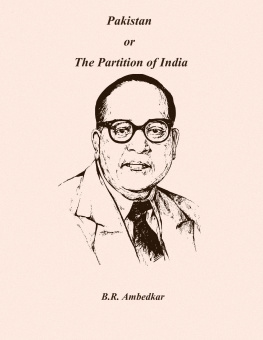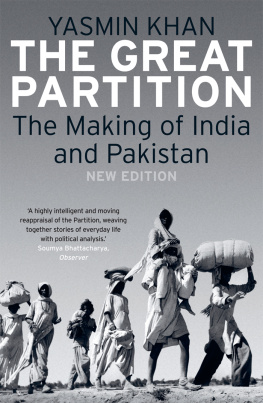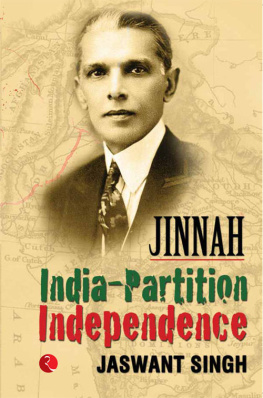OXFORD
INDIA SHORT
INTRODUCTIONS
THE PARTITION OF
INDIA
The Oxford India Short
Introductions are concise,
stimulating, and accessible guides
to different aspects of India.
Combining authoritative analysis,
new ideas, and diverse perspectives,
they discuss subjects which are
topical yet enduring, as also
emerging areas of study and debate.
OTHER TITLES IN THE SERIES
Monetary Policy
Partha Ray
The Civil Services in India
S.K. Das
Panchayati Raj
Kuldeep Mathur
Affirmative Action in India
Ashwini Deshpande
The Right to Information in India
Sudhir Naib
The Indian Middle Class
Surinder S. Jodhka and Aseem Prakash
Bollywood
M.K. Raghavendra
Citizenship in India
Anupama Roy
Business, Institutions, Environment
Runa Sarkar
Indian National Security
Chris Ogden
Party System in India
Rekha Diwakar
For more information, visit our website:
https://india.oup.com/content/series/o/oxford-india-short-introductions/
OXFORD INDIA SHORT INTRODUCTIONS
THE PARTITION OF INDIA
HAIMANTI ROY
Oxford University Press is a department of the University of Oxford.
It furthers the Universitys objective of excellence in research, scholarship,
and education by publishing worldwide. Oxford is a registered trademark of
Oxford University Press in the UK and in certain other countries.
Published in India by
Oxford University Press
2/11 Ground Floor, Ansari Road, Daryaganj, New Delhi 110 002, India
Oxford University Press 2018
The moral rights of the author have been asserted.
First Edition published in 2018
All rights reserved. No part of this publication may be reproduced, stored in
a retrieval system, or transmitted, in any form or by any means, without the
prior permission in writing of Oxford University Press, or as expressly permitted
by law, by licence, or under terms agreed with the appropriate reprographics
rights organization. Enquiries concerning reproduction outside the scope of the
above should be sent to the Rights Department, Oxford University Press, at the
address above.
You must not circulate this book in any other form
and you must impose this same condition on any acquirer.
ISBN-13 (print edition): 978-0-19-948869-8
ISBN-10 (print edition): 0-19-948869-X
ISBN-13 (eBook): 978-0-19-909382-3
ISBN-10 (eBook): 0-19-909382-2
Typeset in 11/14.3 Bembo Std
by The Graphics Solution, New Delhi 110 092
Printed in India by Replika Press Pvt. Ltd
For
Rahul and Karna
Contents
In a recent survey published in the spring of 2017, the Pew Research Center, a well-known US-based think tank, noted that 72 per cent of Indians view their neighbour Pakistan unfavourably. Their survey seems credible as one reads the news or interacts with middle-class Indians in segregated social spaces. As I write this, there is an alarming rise in violence and intolerance in India, especially against minority Muslims and Christians. They have been targets of vigilante lynch mobs seeking to save cows, seen by many Hindus as holy. In addition to being perceived as beef-eaters and cow-killers, Indian minorities are also demonized as Pakistani and Western loyalists. The 1947 division remains front and centre as questions of national belonging and citizenship periodically resurface, and the postmemory of India and Pakistan rethink their relationship in oppositional terms rather than emphasizing commonalities.
It would be easy to see the Partition of India as the symbolic culmination of age-old animus between Hindus, Muslims, and Sikhs, a clash of civilizations that has continued to fester through issues of border skirmishes, water wars, the global and regional wars on terrorism, and, of course, Kashmir. However, I suggest that to do so, to seek answers for the Partition of India within a linear trajectory of communal antagonism, would be to miss the non-linear and multiple paths that brought us to 1947. It would then erase the narratives of plurality, communal unity, and of human connections that dotted those very paths.
This book provides a very brief history of the Partition of India not as a singular event that marked the failure of high politics, but as a messy, long-drawn-out process that was not inevitable. It is no easy task to provide a comprehensive narrative of the Partition within the requirements of this short introduction and to do justice to the rapidly expanding scholarship on the event. However, this book is informed by both recent and initial scholarship on various aspects of why and how the Partition happened, and seeks to acquaint the reader with the human experience of the division as well as its long-term legacies. It attempts to focus on both the Bengal and the Punjab experience and compare and examine why regional experiences were so distinct. Although the Partition directly impacted three new nation statesIndia, Pakistan, and, later, Bangladeshthis book focuses primarily on its legacies in India.
The book suggests that there is no singular paradigm when one examines the causes of Partition and the experiences of dislocation, rehabilitation migration, and violence in the partitioned regions. Rather, it urges its readers to pay attention to contextual politics, go beyond cultural explanations, and to think about the diverse range of experiences mediated by class, gender, caste, religion, and language. The aim is to introduce and encourage the reader to go further in depth in their quest for knowledgein this, the book is a guide, a starting point to understanding a fascinating and multifaceted event.
The writing of this book has been a difficult journey, because of the complex subject which needed compression without losing its comprehensive focus and owing to the time I could afford to its writing amidst teaching a 3-3 load at the University of Dayton, USA. I am thus thankful to the Dean of the College of Arts and Sciences for giving me two course releases at the initial stages of the project. I am grateful to my colleagues and friends here, Chris Agnew, Dorian Borbonus, Una Cadegan, Simanti Dasgupta, Ellen Fleischman, Caroline Merithew, and Juan Santamarina, for their unwavering support and encouragement at various stages of the project. I am grateful for the warm support I have received over the years from Douglas Haynes, Wendy Singer, and Barbara Ramusack.
I have benefitted from my engagement with scholars and students at two conferences Partition in Bengal: Looking Back after 70 Years, organized by Sekhar Bandyopadhyay, Jayanta Sengupta, and Rituparna Roy in August 2017, and Partition and Pluralism, at Columbia University, USA, in January 2018. The ideas presented at these conferences by scholars and students have helped immensely in revising the draft manuscript. I would like to thank Paula Braley for the initial round of copyediting. I am grateful to the team at Oxford University Press for their patience and steady encouragement with the project.
My friends inspire me with how they deal with life and in sharing their thoughts and ideas with me. A big thank you to Anuradha Agarwal, Subhra Bhattacharya, Varuni Bhatia, Arvind Elangovan, Sayata Ghose, Sharatee Ghosh, Madhubanti Mukherjeee, Neeti Nair, Alita Nandi, Raisur Rahman, Sudipa Topedar, Sharmadip Basu, and Aparna Vaidik for reminding me of the serious and not-so-serious aspects of our lives. My parents, Haripada Roy and Gouri Roy, did not let their unconditional love for me prevent them from asking, quite often, about the possibility of seeing this book at the next boi mela (book fair). Finally, they will get their wish. To Rahul and Karna, more is owed than I can say.



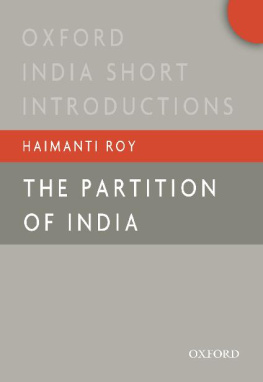
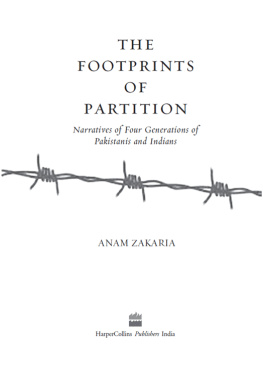



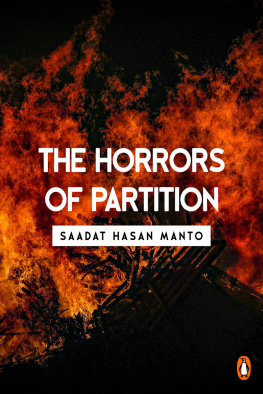
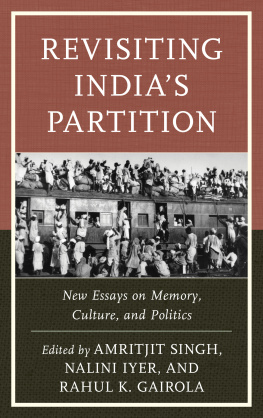
![Gandhi - Gandhi: [the true man behind modern India]](/uploads/posts/book/175484/thumbs/gandhi-gandhi-the-true-man-behind-modern-india.jpg)
